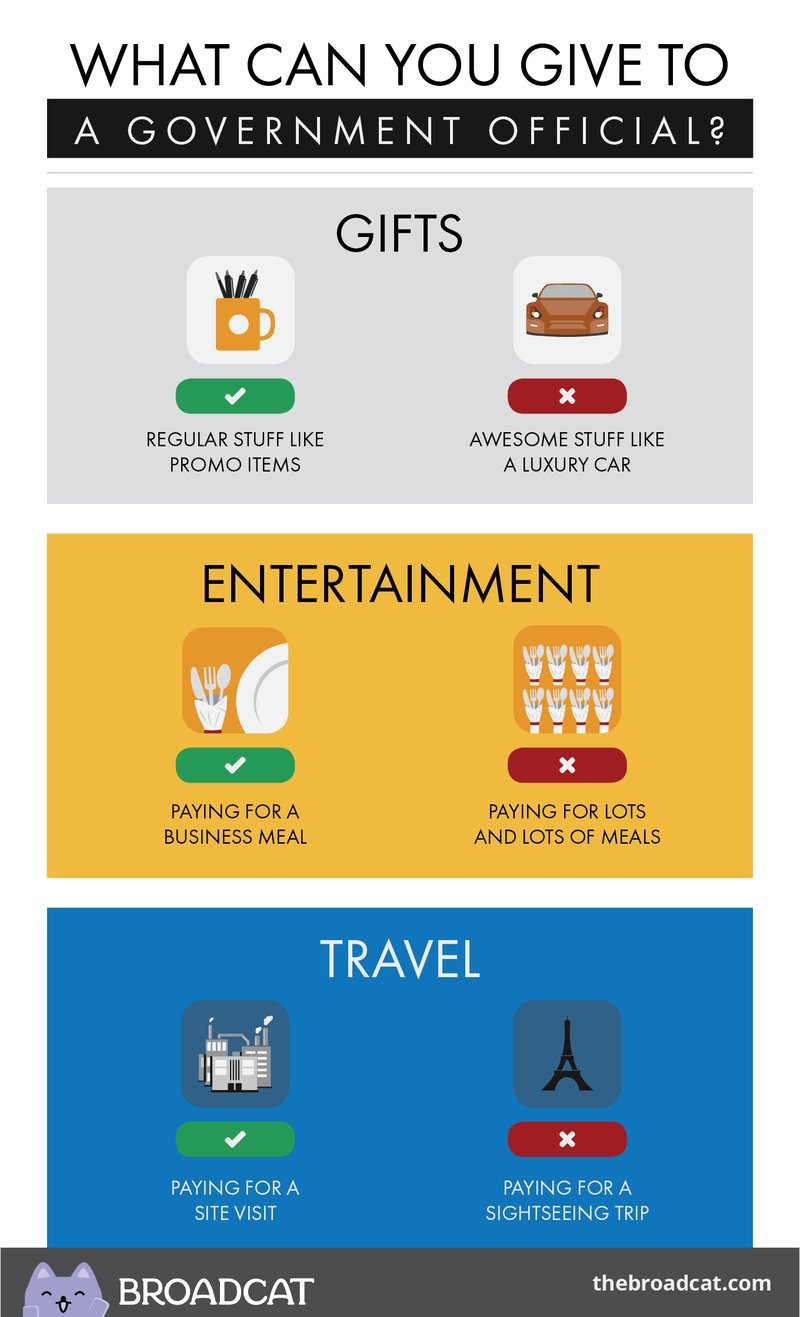
WSJ report: why contrasting examples work for training
Today—April 13—the Wall Street Journal reports that a new study affirms the use of contrasting examples as the most effective way to teach conflicts of interest. (Unfortunately, it's not published yet, so we can't link to it.)
This is an important confirmation of the existing social science in the ethics learning context—we've known that contrasting examples generally work, but specific validation in our context is new. A lot of the learning science originates in the developmental context, so confirmation that it holds true for adult learning in a business environment is important.
We first wrote about the topic of contrasting examples back in December, in a post that we're reproducing below (and which ran on the SCCE's blog here). (We've refreshed the look of our infographic, too—you can grab it if you're a Member of Compliance Design Club.)
In that post, we use contrasting examples in a gifts and entertainment infographic to help promote learning. (Put otherwise, we don't just make pretty pictures. This stuff is here for a reason.)
You'll find a link to How People Learn near the bottom of the post (before the infographic), which is put out by the National Academy of Sciences, is the best catalog of the science on learning, and can be read online for free. The bit on contrasting examples starts at page 60 and picks up again at 78.
If you do training, read it. It's accessible even if you don't have a background in developmental or educational psych—and if, like me, you have a degree in that stuff, you'll find it the most readable thing ever.
And thanks to Professor Loewenstein for grinding through this new study (1200 surveys!). As we've said elsewhere, training is only worthwhile if it teaches people to actually do stuff—otherwise you might as well just show your employees cat videos.
As we head into the heart of gift-giving season, it's a good time to give your employees a reminder on gifts and entertainment. And to help you do that, here's an email-ready infographic with some basics from the DOJ's 2012 FCPA guidance.
Right-click it to save, drag-and-drop it into an email, and then add your company-specific guidance; it's written in a way that should work with your policies and procedures (unless you ban gifts, entertainment, and travel to government officials outright).
But before you do that, check out how we've structured this around the use of contrasting examples. This is the best way to help employees learn how to apply a rule, and using it will pay dividends in all of your training.
In fact, if you're in the habit of providing employees with a single case study, the social science shows that you might actually be hurting their ability to learn. That's because a single case study can over-contextualize the learning—basically, employees learn how to apply the lesson in just that context and ignore other applications.
On the other hand, using contrasting examples helps employees learn which characteristics drive which outcome—and that helps them apply the lesson correctly in new circumstances.
(And if you're a super training nerd and want to go deeper into this, check out the chapter on the concept of transfer from How People Learn by the National Academy of Sciences, which you can read online here. It's the best all-in-one catalog of the social science of human learning.)


